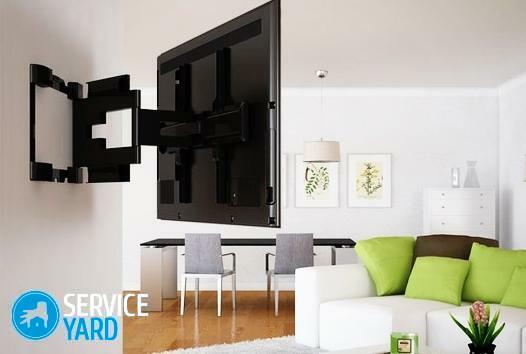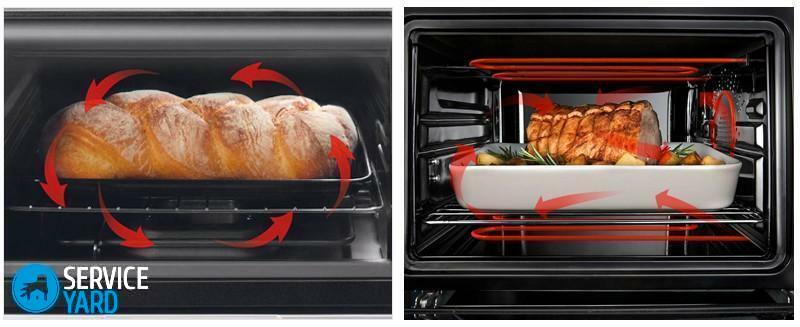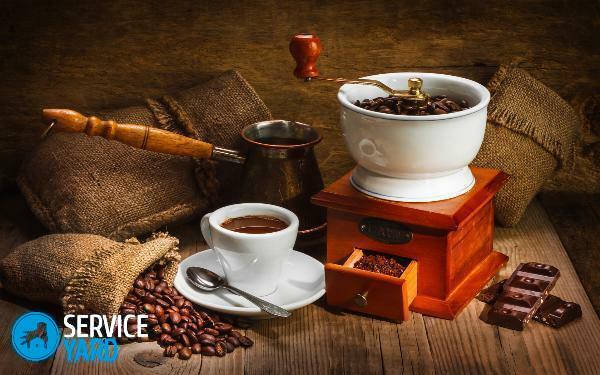On your own, you can create a unique design in a house or apartment. Most often, the wall decoration is changed. Thanks to modern materials and technologies, it is possible to replace obsolete paper or vinyl canvases with new liquid wallpaper for walls. You can buy a ready-made mass of the desired color and texture, or make it yourself. Before choosing this method of decoration for vertical surfaces, it is necessary to study in detail the characteristics and options for applying the material.
Content
- Advantages and disadvantages of using liquid wallpaper
- How to choose the right one
- Types of liquid wallpaper
- Color spectrum
- What styles are used
- Combination with other finishes
- Rules of work and application
- Required materials and tools
- Surface preparation
- Preparation of the composition
- Trowel application
- Roller application
- Create a pattern from liquid wallpaper
- How to care for liquid wallpaper
- Varnishing and painting
- How to remove liquid wallpaper
- Where are used
- On the kitchen
- In the living room
- In the nursery
- In the bedroom
- In the bathroom and toilet
- How to make liquid wallpaper with your own hands
- Conclusion
Advantages and disadvantages of using liquid wallpaper
Any material has advantages and disadvantages. The main plus of liquid wallpaper is the ease of application and the absence of the need for surface preparation. They perfectly mask small chips and cracks on the walls. According to the principle of plaster, the mixture fills all the recesses and hides defects.
According to consumer reviews, they have an attractive appearance, they can be of very different colors and textures. At home, this is achieved by adding color. Any damage can be easily corrected with your own hands if you properly glue a new mixture onto the damaged area. Contaminated areas are removed by reapplying the diluted granules.
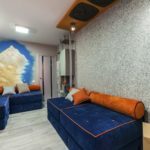
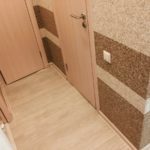
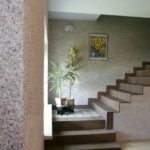
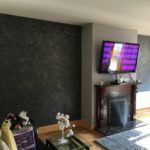

A room with this finish will look beautiful. The thermal insulation characteristics are increased near the walls. They are pleasant to the touch even when the room temperature drops significantly. Any kind of such wallpaper applied to the walls will have good anti-static properties. Provided high-quality pasting and careful attitude, such wallpapers can last up to 20 years.
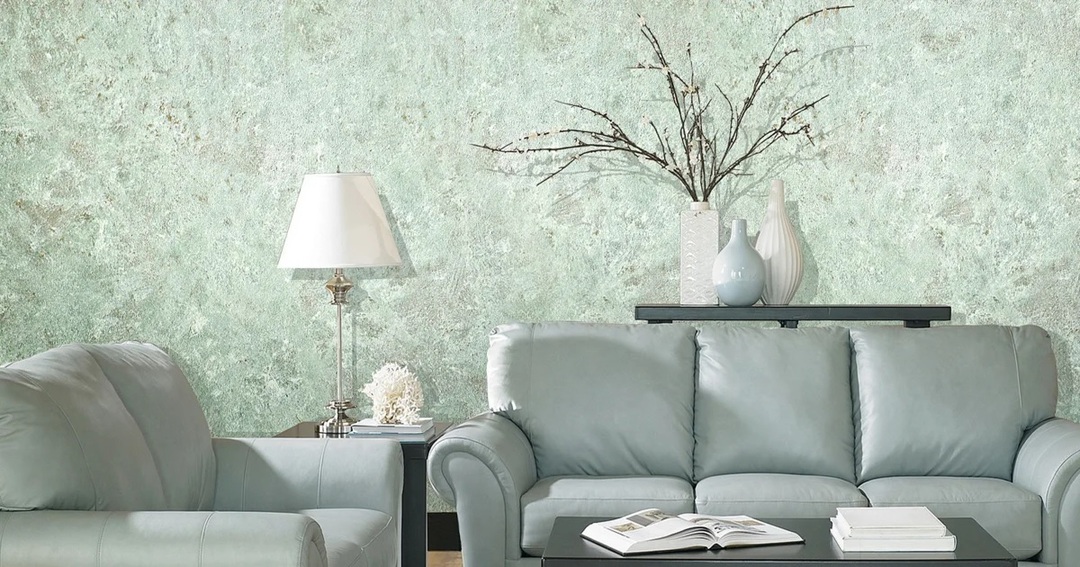
The disadvantages include the need for additional drying. For quick evaporation of moisture, you will need to provide good ventilation in the room. In winter, you will need to put additional heating devices into the room. Of the minuses, one can also note the lack of the possibility of wet cleaning and the high cost of the material.
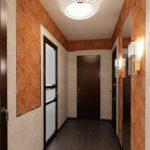
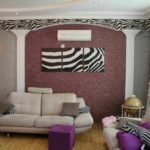

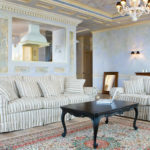
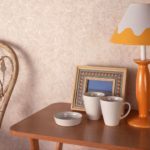
How to choose the right one
The choice of any material for decoration is fraught with many nuances. There are many factors to consider when buying a decorative mixture. Attention should be paid to the following points:
- Wallpaper type. Various aqueous mixtures in the form of an additive can have silk, cotton, cellulose filling. They add decorativeness due to sequins, mica, multi-colored threads, wood chips and other materials.
- Colour. Choose a suitable shade, taking into account the purpose of the room and its size. For offices, plain, pale surfaces are used. In living rooms, basic interior design plays a decisive role.
- Price. The price of many types can vary significantly. Mixtures from well-known manufacturers will be more expensive, guaranteeing the use of only high-quality components.
- Manufacturer. Blends based on silk fibers from French, Turkish manufacturers have proven themselves well.
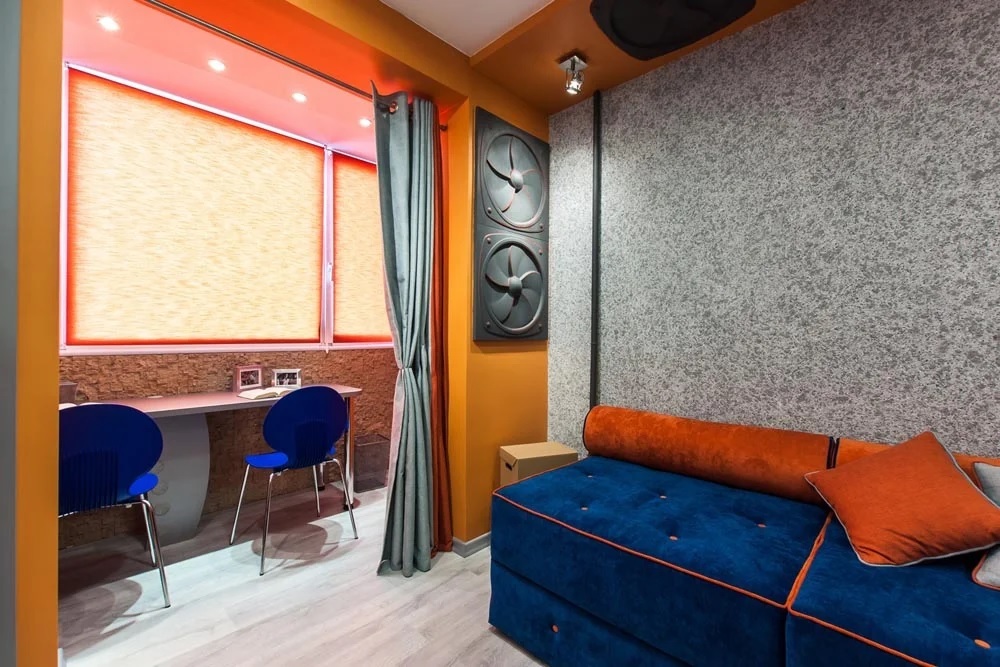
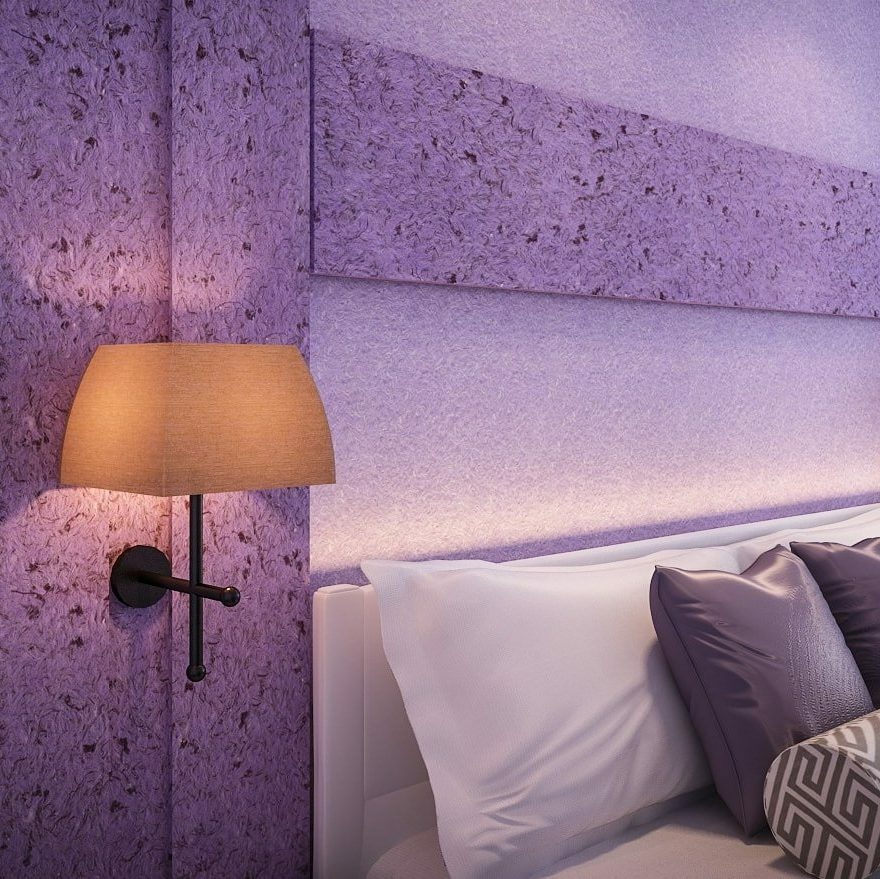
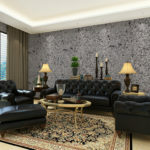
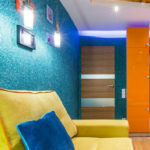
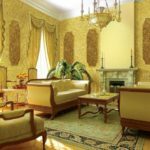
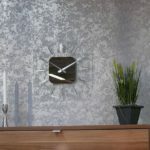
Types of liquid wallpaper
The composition of any water mixture for decorative wall decoration includes many components. Thanks to this filling, the material receives antistatic properties and becomes fireproof. The main types of wallpaper include the following:
- Cotton. Made from natural materials, they comply with all environmental safety standards. The applied material has a rough structure from 1 to 10 mm.
- Silk. The composition includes natural, artificial fibers, colored quartz, mineral fillers, decorative additives. The universal coating has a smooth surface without seams, good repairability. They can be used in rooms with high humidity.
- Liquid with a pattern. Suitable for all interiors. For decorative painting, any idea is chosen, then a drawing is applied from the photo with a pencil or felt-tip pen. You can also use any stencils.
- Liquid for the ceiling. A wet ceiling can look like stucco or three-dimensional patterns. The method of application is identical to vertical surfaces, the only thing you need to take care of is a reliable bond to the base.
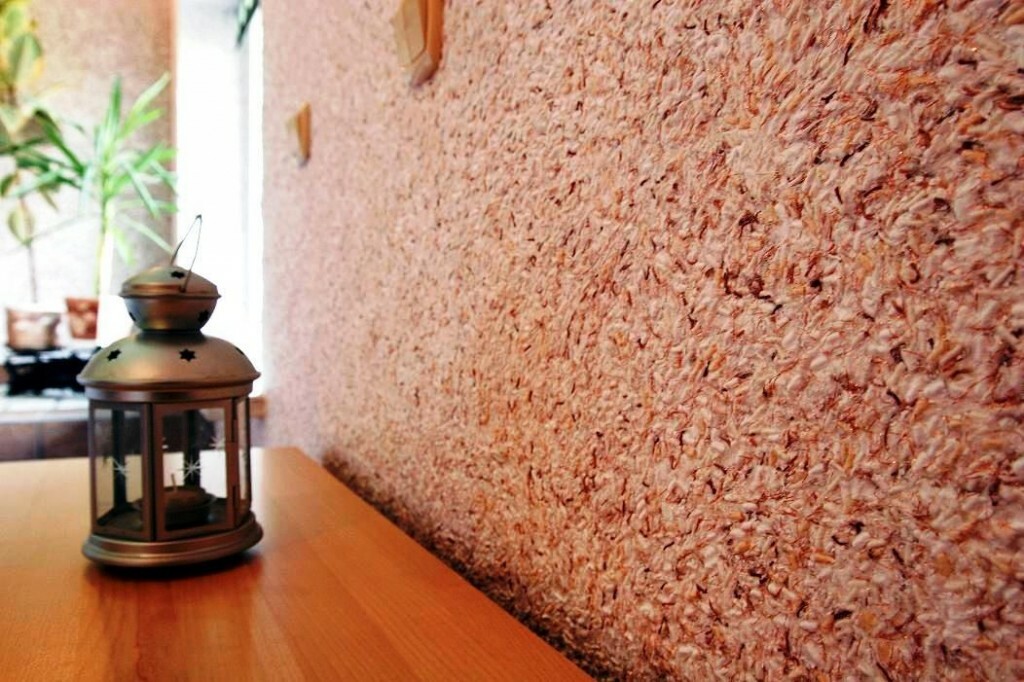
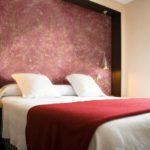
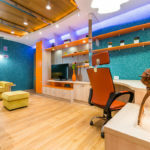

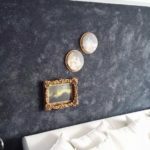
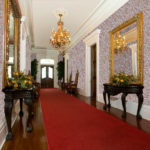
Color spectrum
A harmonious interior will allow you to create a well-chosen and combined color. Stopping at certain shades, one should take into account the purpose of the room, its degree of illumination, area and layout features. Such a finishing material has earned popularity due to the huge selection of mixtures of all colors and textures.
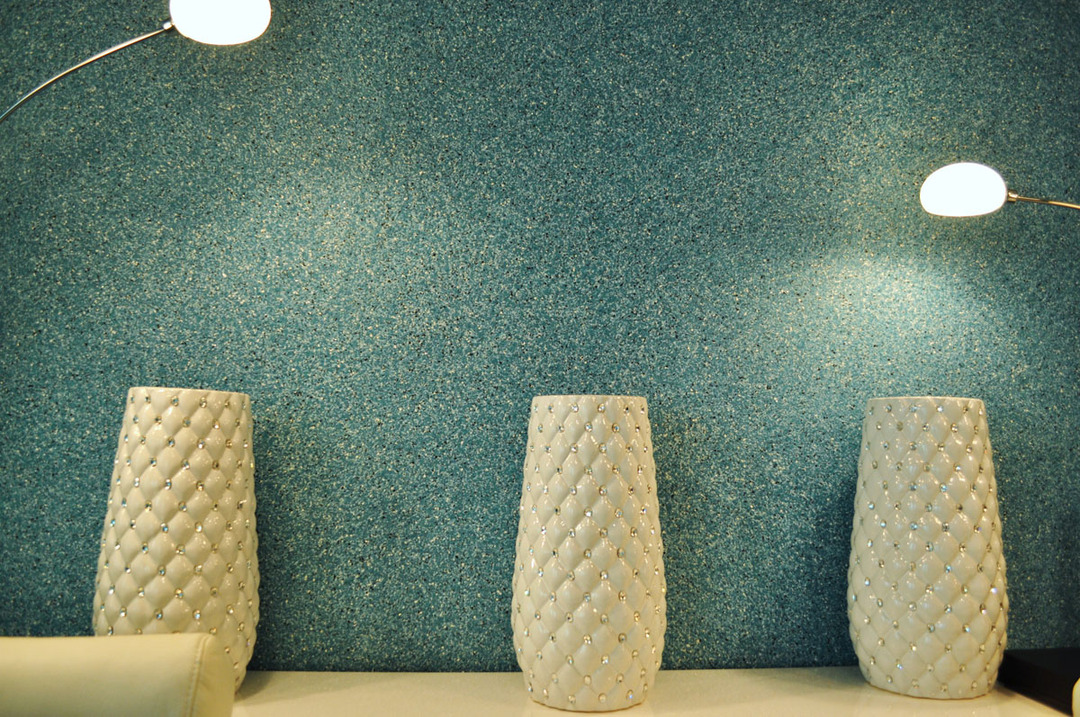
Various color effects are obtained by composing certain compositions. You can buy a ready-made package with mixed particles or separate containers for self-combination and selection of the most successful shades.
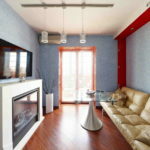
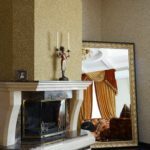
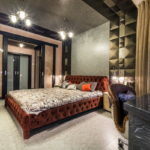
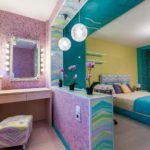
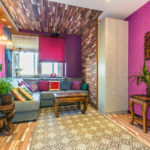
What styles are used
Visually, in the interior, liquid wallpaper resembles ordinary rolled canvases. Using such a coating, you can independently create a unique design in the room, as in a fashionable catalog. To do this, mix different colors, focus on certain details. The material can be used for wall decoration in any room. There are several ways to achieve various decorative effects suitable for a particular style:
- Formation of drawings, patterns;
- Painting in various colors;
- Relief giving;
- Application of stripes with a change in direction.
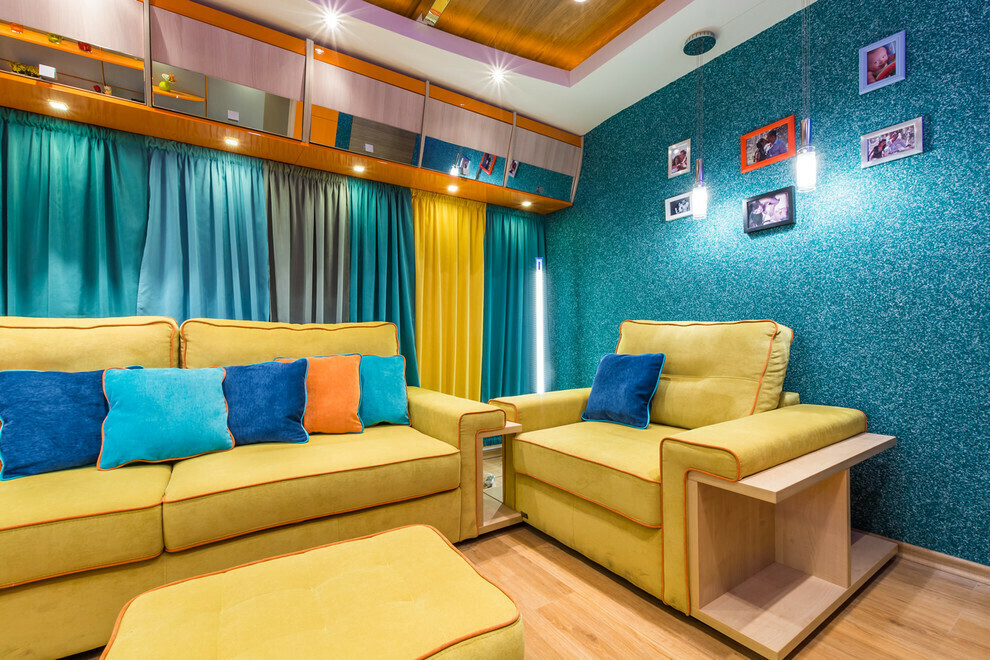
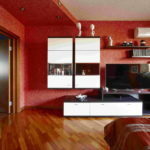
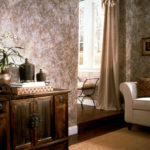
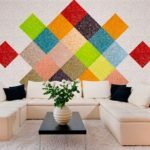
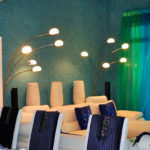
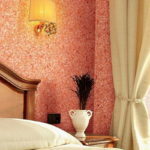
Combination with other finishes
When decorating the interior, several shades are most often combined. It can be two colors related in different ways. Many other finishing materials are successfully combined with liquid wallpaper. Vinyl wallpaper, tiles, wood look good next to them.
The smooth surface of liquid wallpaper allows you to apply a decorative stone in the form of rock fragments and smooth brick elements. This combination is suitable for hallways, protecting the bottom and corners of the walls from dirt.
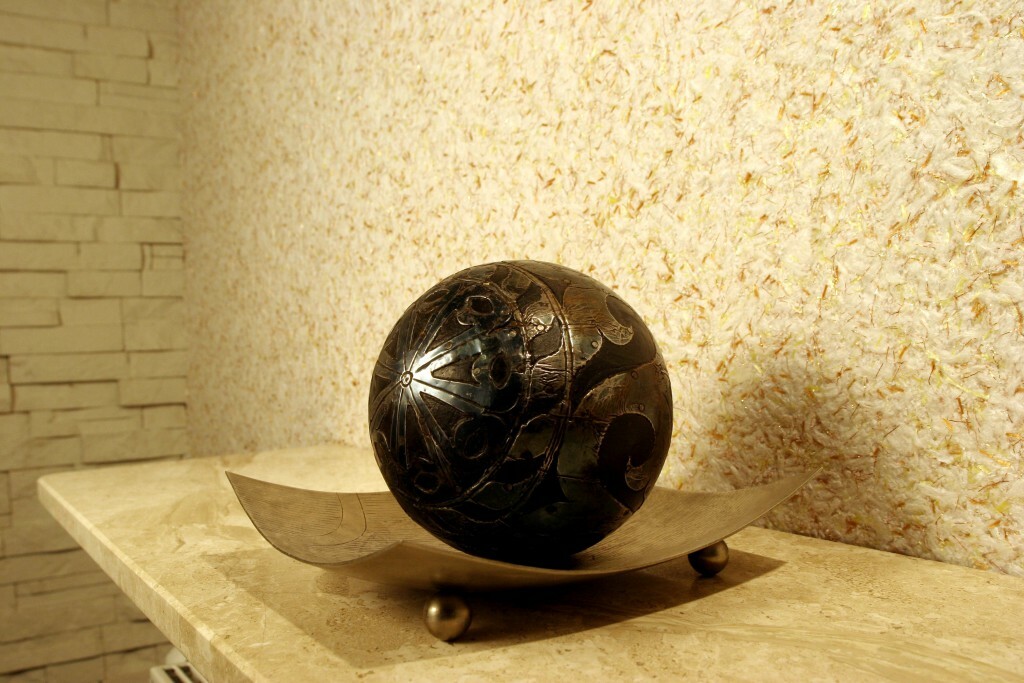
A successful combination will be obtained by combining liquid and simple paper canvases. The finish should match the color scheme and be as close as possible in structure.
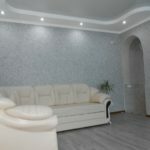
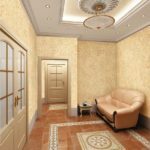
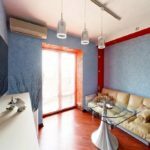
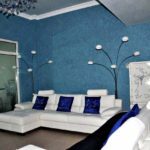
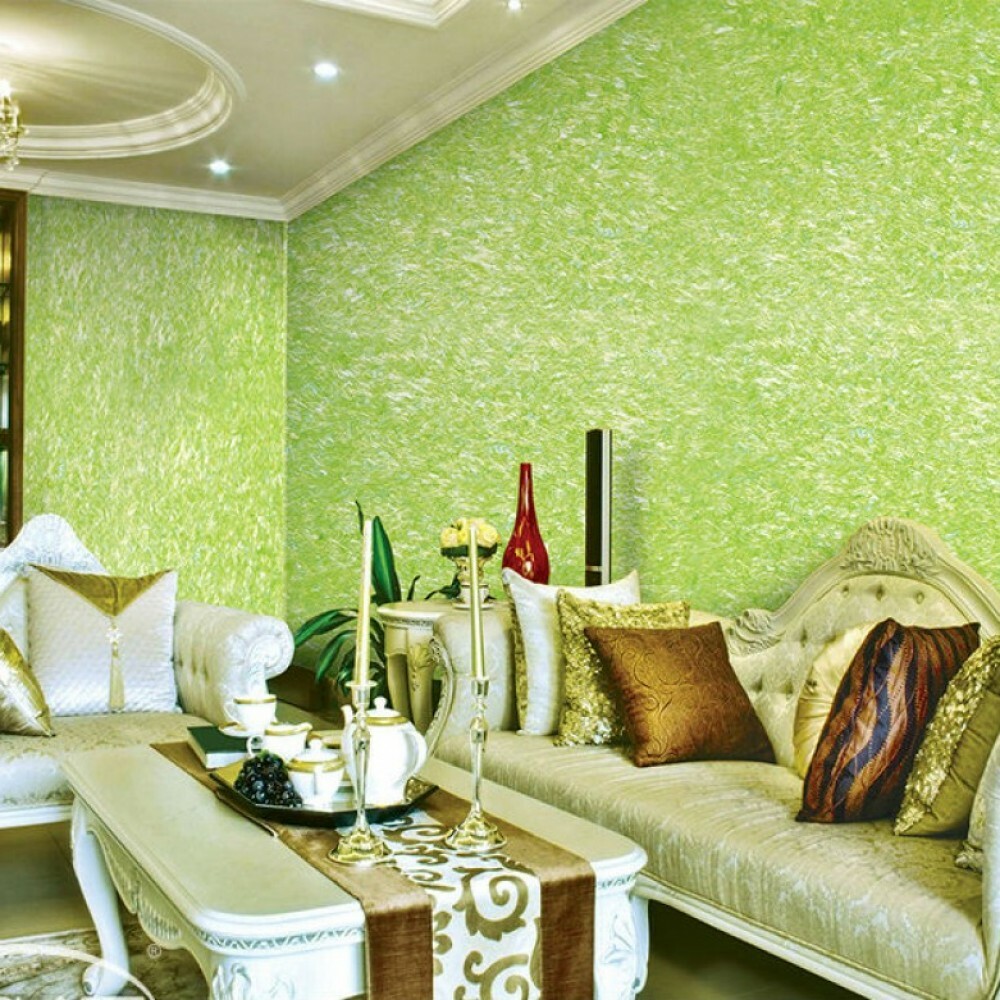
Rules of work and application
Working with liquid wallpaper is very simple, so you can do the preparation and application of the mixture with your own hands, without having certain skills. Transfer and leveling of the mixture to the surface is carried out according to the principle of plastering. The essence of the work lies in the correct formation of the decorative layer on the surface.
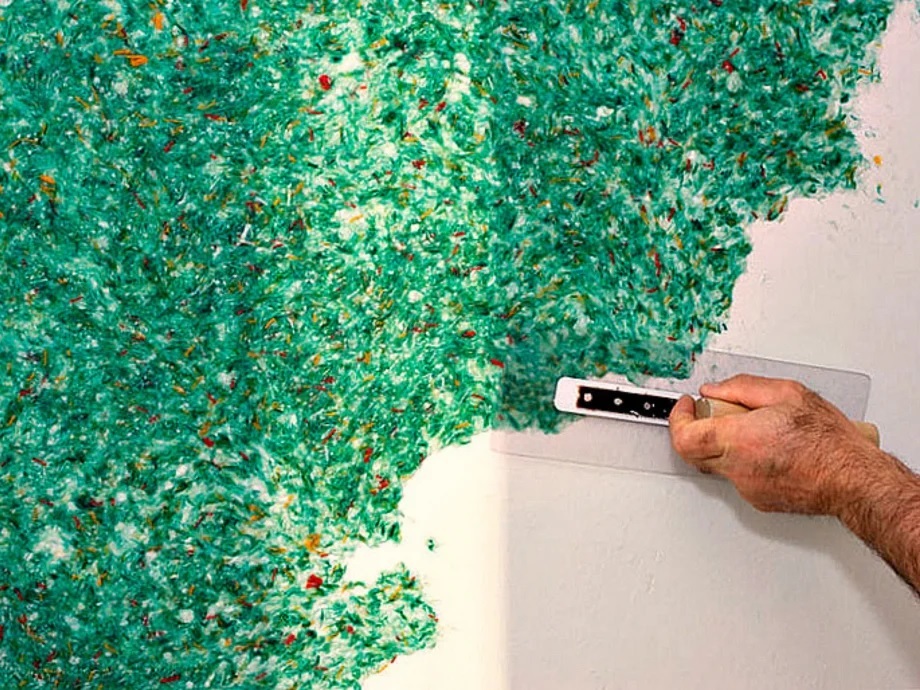
Required materials and tools
Each master chooses a tool for various techniques for applying liquid wallpaper independently, based on personal preferences and habits. Before buying the necessary items for repairs, you need to evaluate the density of the mixture, the size of the decorative elements present, and the coverage area. Laying liquid wallpaper in an apartment is easier with the following tools:
- Metal spatulas;
- Grater and trowel;
- Rubber, plastic spatulas;
- Valikov;
- Spray guns, guns, hopper pistols;
- Spray gun;
- Containers for mixing the mixture.
In addition to the free-flowing mixture itself, several mandatory materials will be required for the preparation and application of liquid wallpaper. You cannot do without putty and primer. If the repair will be carried out in the bathroom or in the kitchen, then it is necessary to purchase sufficient quantities of acrylic varnish and oil paint.
Surface preparation
Any wall decoration activities begin with their preparation. Although many masters do not stop at this point, this procedure is necessary to achieve the ideal appearance and extend the service life.
The dense texture of liquid wallpaper will hide small defects, but it is not able to mask depressions of more than 3 mm. If there is old plaster or pieces of wallpaper on the wall, they must be removed, otherwise, over time, the old finish will flake off along with the new one.
You also need to get rid of bright colors and drawings. Unwanted patterns can show through a layer of wet paper. The whitewash must be soaked and removed with a spatula, since it is unsuitable for reapplying decor. The adhesion of materials can be increased by priming. The surfaces are then treated with white paint to create the perfect backdrop.
To avoid the appearance of rusty spots due to metal corrosion, first of all, all nails, metal fasteners, and self-tapping screws are taken out of the walls.
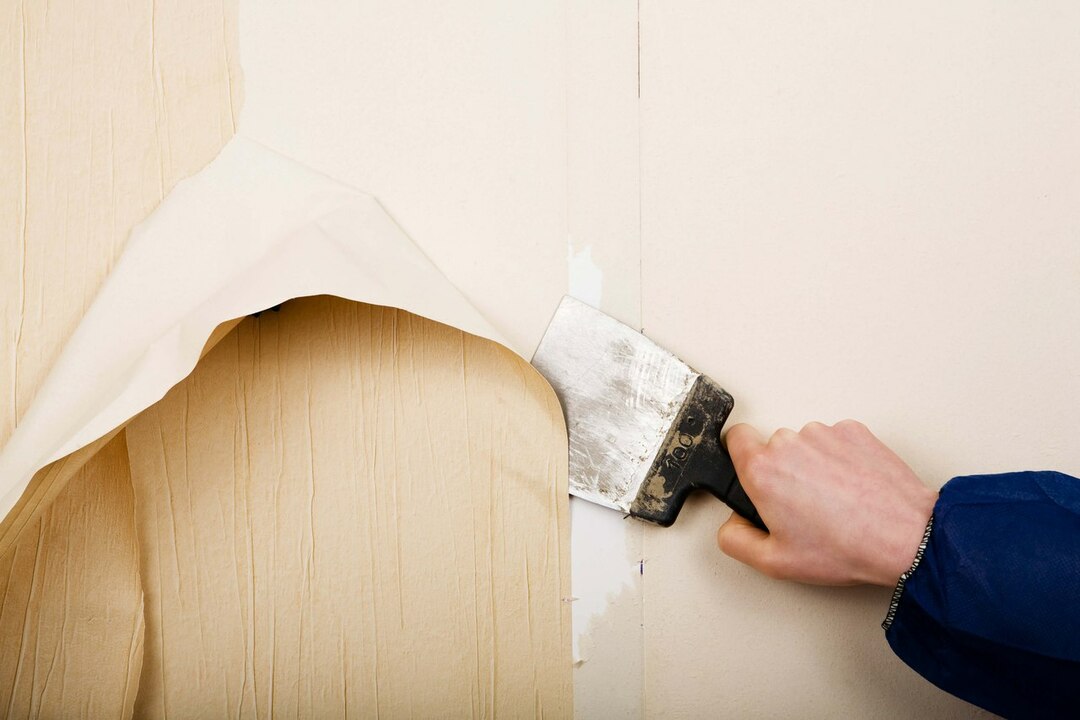
Preparation of the composition
For effective work, liquid wallpaper should be properly diluted. It is important to immediately select the required amount of material, since re-mixing may already be different. The preparation of the mixture takes place step by step as follows:
- The mixture must be shaken, fluffed together lumps from long storage;
- Pour dry matter into a container and fill with warm water;
- It is better to stir liquid wallpaper with your hands so as not to harm the decorative elements. The material is completely safe for the skin of the hands;
- Leave the mixture to infuse for 10-12 hours.
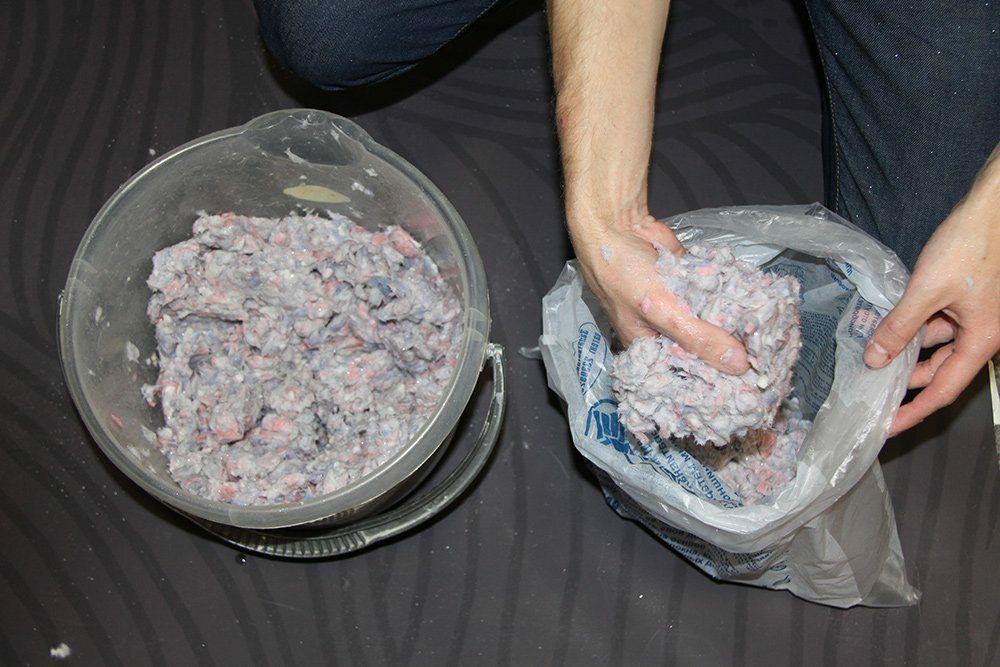
Trowel application
Plastering tool with a flat base is used for smoothing liquid wallpaper on the surface. It allows the mix to be spread easily and evenly. Craftsmen use a stainless steel and organic glass trowel. Rectangles with a handle in the middle allow you to control the thickness of the layer and the uniformity of the material.
The trowel is used not only for leveling, but also for transferring the mixture to the wall. First, liquid wallpaper is applied to it, then pressed to the surface and distributed with smooth movements in different directions. In hard-to-reach places, they work with trapezoidal trowels. Oval spatulas and in the form of an iron are used in rounded areas and in niches.
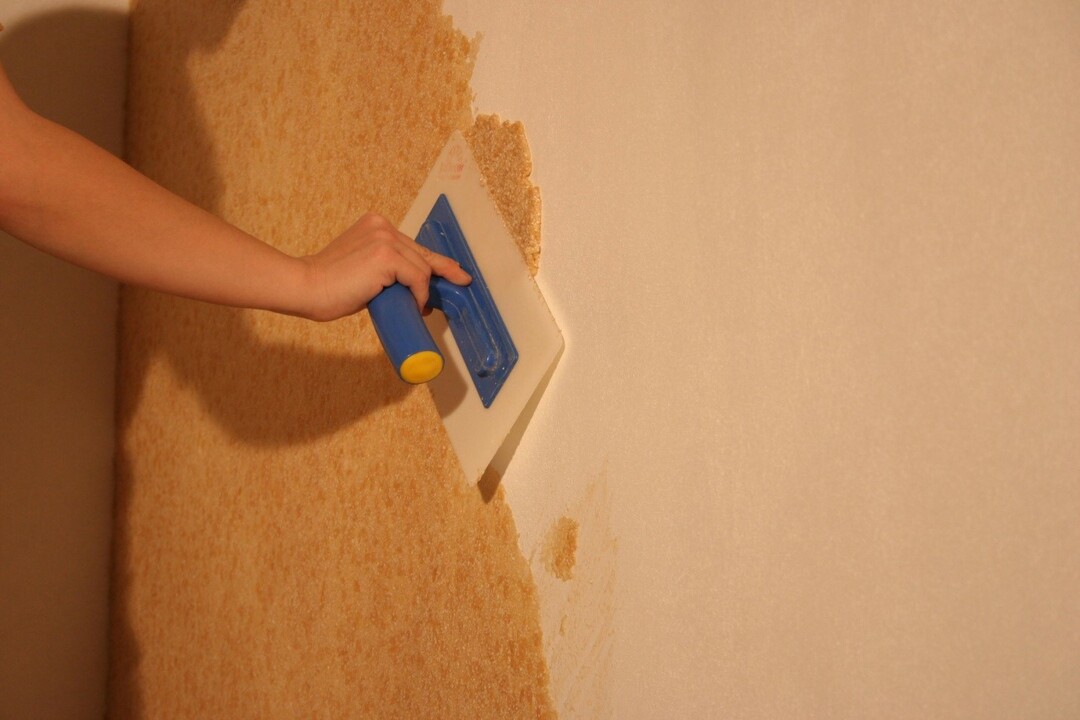
Roller application
Many craftsmen consider the application of a liquid mixture with a roller to be the most effective. With such a painting tool, it is easier to achieve a flat surface without a single seam. To create a textured layer, use a roller with the same pattern on the working base.
It is better to use a hard roller. Its pile must be at least 3 mm, otherwise it will be very difficult to apply using a sample, a thick mixture. With the help of a roller, you can not only create a decorative layer, but also give it a special relief. As a tool, it is suitable for all surfaces - ceilings, walls, adjoining bases.
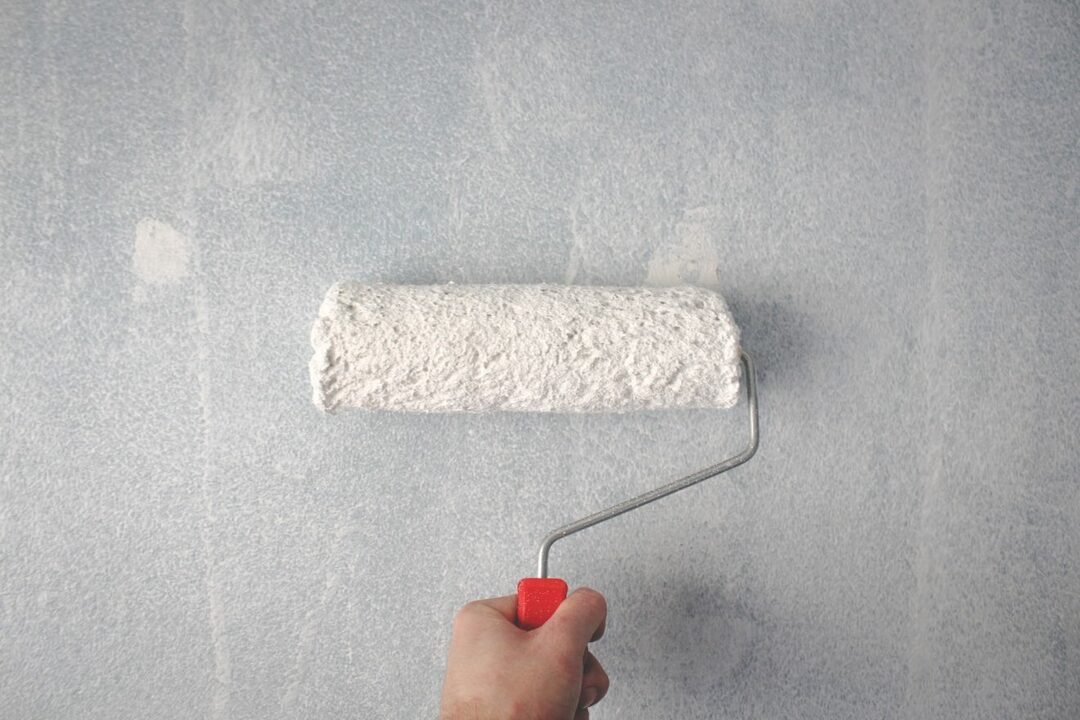
Create a pattern from liquid wallpaper
Drawing is done in several ways. A suitable method is selected based on the characteristics of the substrate and its level of adhesion. On the finished cladding, patterns are created with special paints after it has completely dried. If you have problems with artistic skills, use a stencil. They are applied in the right place and filled with liquid wallpaper of a certain shade. Thus, you can get a three-dimensional eye-catching pattern.
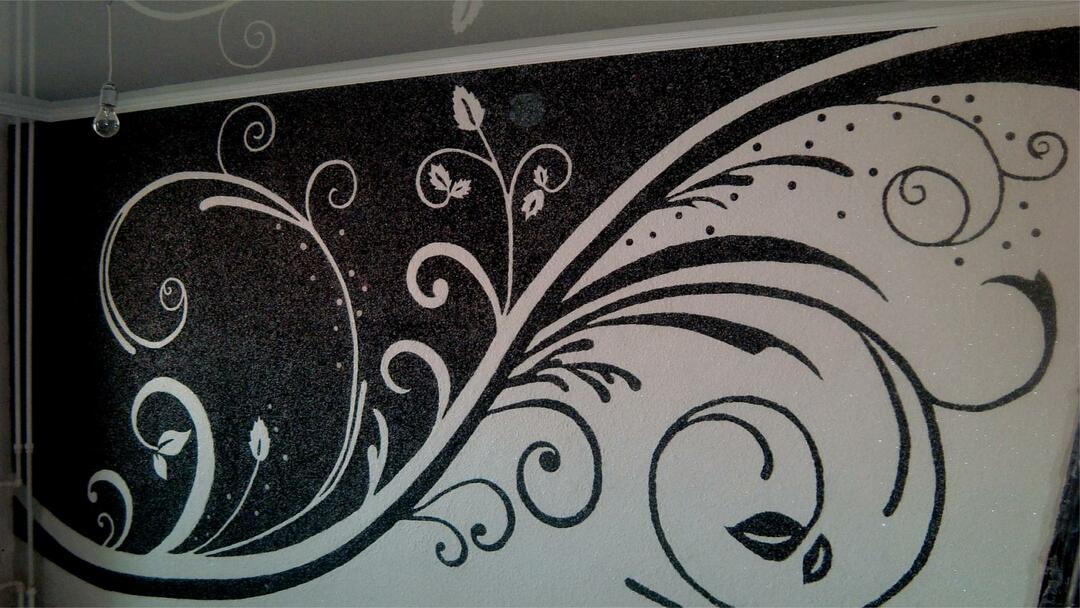
You can also fill in the voids with a mixture of contrasting shades. Each fragment of a pattern or flower is filled in separately with strict adherence to the borders. But such a cladding cannot be done in one day, especially if it is applied to a smooth surface, for example, drywall, OSB. You will need to soak the joints more than once and level them with a spatula.
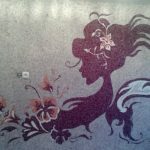
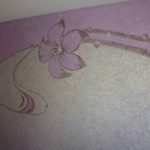
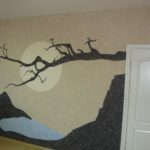
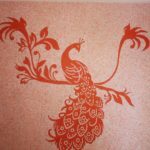
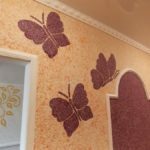
How to care for liquid wallpaper
To maintain cleanliness, it is enough to periodically walk along the walls and ceiling with a vacuum cleaner. This must be done without pressure and carefully in order to preserve the appearance of the finish as long as possible and not damage its soft shape. To remove stains, proceed as follows:
- Fresh greasy stains that did not have time to eat into the paper are removed with a stationery eraser;
- Areas actively contaminated are soaked with water and removed with a spatula. Then a new coating is applied;
- A layer of liquid wallpaper with partially developed rusty spots is removed, metal elements are removed, and a new mixture is applied.
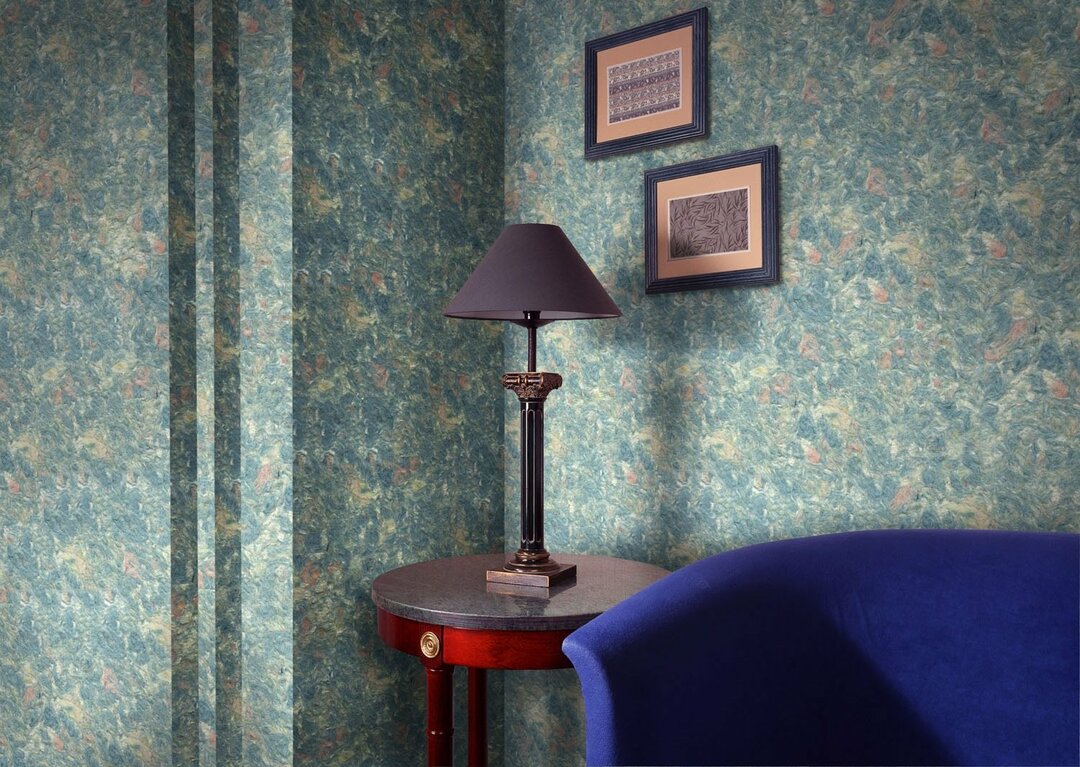
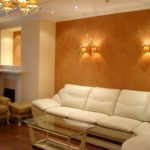
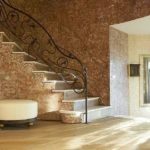
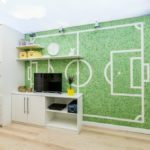
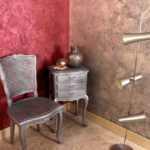
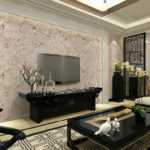
Varnishing and painting
To increase moisture resistance, liquid wallpaper can be varnished or painted. However, it is worth considering the fact that the material will lose some of its qualities, the surface will become rough, its shade will change. Paint and varnish mixtures are used mainly in bathrooms, bathrooms, partially in the kitchen. Experts recommend using colorless acrylic compounds that do not have a pronounced odor and are resistant to abrasion.
The very process of applying coloring compositions is simple. For work, you can use a medium-bristled roller, brushes with not stiff bristles. Varnish or paint is usually applied in 2-3 layers. This is due to the peculiarity of the wallpaper itself. The first layer is partially absorbed into the material itself, therefore it cannot fully provide the necessary protection. The next layer should be applied only after the previous one has dried, after 9-12 hours.
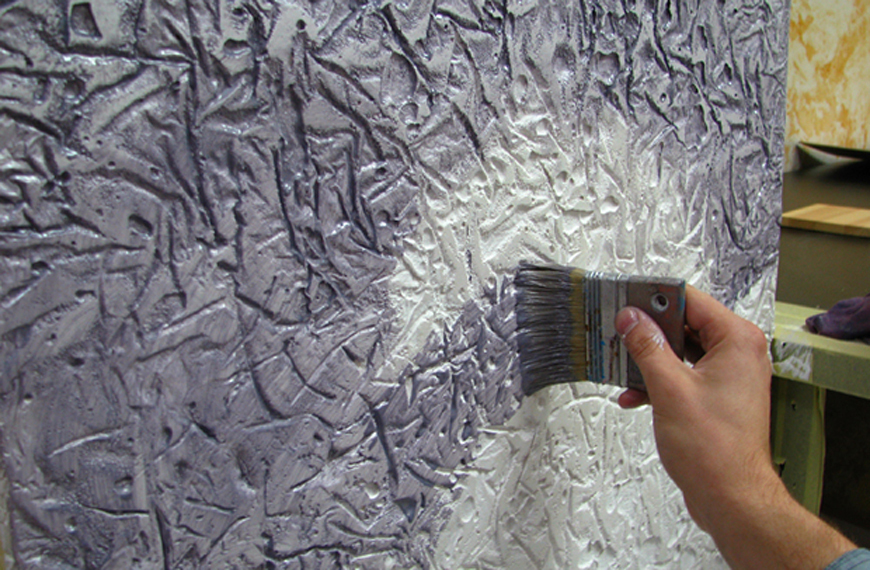
How to remove liquid wallpaper
Removing liquid wallpaper from walls and ceilings is not particularly difficult. After all, a new coating should not be applied over the old one. This can lead to mold, inability to align the walls. Before proceeding with the removal of material, it is necessary to prepare the room for the work being performed, namely to glue film or masking tape batteries, baseboards, baguettes, take out or cover furniture, protect electrical points from getting into moisture.
Next, you should prepare a solution that is used to soften the facing material. To do this, it is enough to add liquid soap or dishwashing detergent to warm water, at the rate of 2 tablespoons per 1 liter, as well as 1 tablespoon of vinegar. After preparing the solution, you can proceed directly to dismantling:
- using a metal scraper or an ordinary knife, cuts are made along the entire surface of the wall;
- the prepared solution is applied over the entire surface with a sponge or brush;
- after 15-20 minutes, the wallpaper softens, it can be easily removed with a spatula in whole pieces;
- in some cases, for example, for cleaning additionally painted, varnished surfaces, you will need to use an industrial hair dryer, a grinder, a grinder with special attachments.
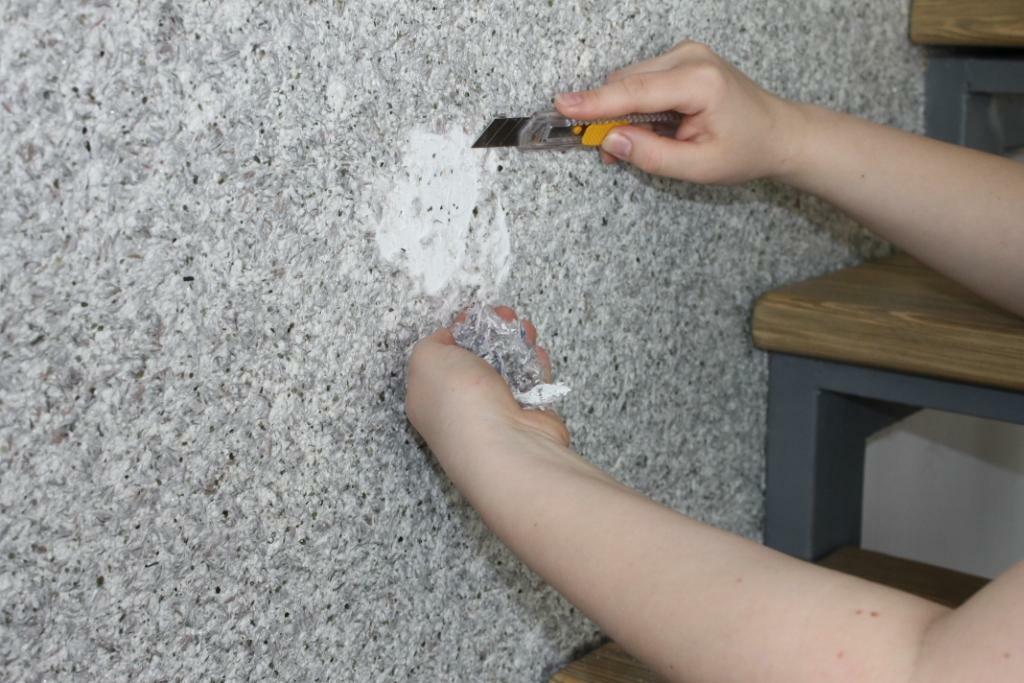
Where are used
The high decorative and operational characteristics of liquid wallpaper have made them quite popular. The practicality and durability of the applied material allow the finished surface to be used for a long time, which practically does not lose its appearance. These and many other features of the product have provided it with a fairly wide range of applications.
Non-standard wallpaper is most often used to decorate private houses and apartments. They can be found in the interior of living rooms and bedrooms, children's rooms and corridors, less often in the kitchen or in the bathroom. However, this type of decoration is also used in non-residential buildings, both in public and private institutions. As an example, in restaurants, cafes, beauty salons, hotels, and other public places.
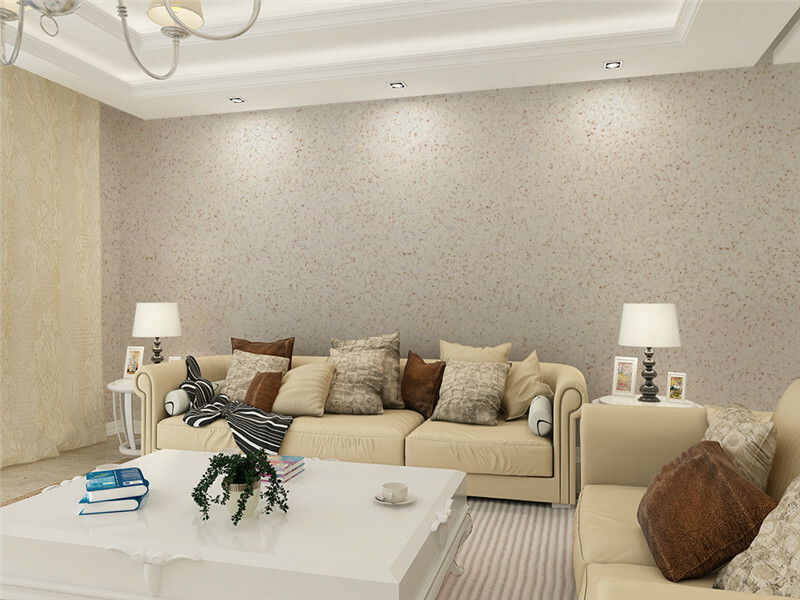
The absolute plasticity of the material allows it to be applied to the most complex geometric areas, for example, arches, columns, any curved surfaces. The composition is easy to prepare, and all the work is easy to do with your own hands. Due to the environmental safety of the product, it is used even when decorating premises in hospitals, public catering, and in other institutions with strict hygiene requirements.
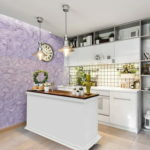
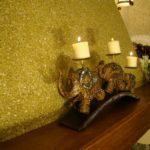
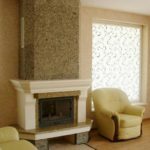
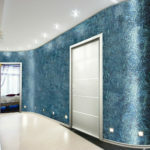
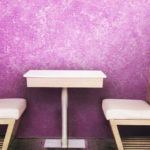
On the kitchen
The kitchen room is very important in every person's life. Here, most often the whole family gathers together, serious issues are discussed, members share their impressions of the day. The room is especially valuable for the mistress of the house, who creates her culinary masterpieces. The kitchen constantly requires special care, so the choice of finishes for it should be approached very responsibly, taking into account every little thing.
There are many opinions related to the compatibility of liquid wallpaper with this room, while they differ significantly. Some are categorically against such a decision, while others, on the contrary, decorate the interior with this type of finish. To understand both, you should consider all the important aspects.
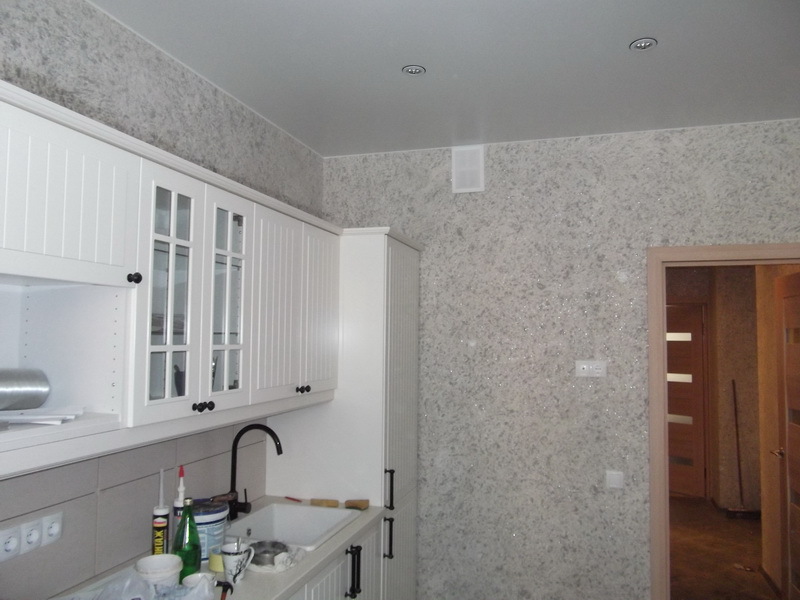
It should be borne in mind that the coating cannot be washed, and in fact contamination appears in the kitchen every day. The dirt will have to be removed with a knife, and in case of damage to a separate area, it will need to be covered with a fresh compound. Therefore, the most at-risk areas, for example, an apron, are best tiled with a conventional slab. You can also coat the wallpaper with a layer of acrylic varnish.
Keep in mind the humidity in the room, which is constantly changing. During the cooking process, a large amount of vapor is generated, which can negatively affect the condition of the material. Care must be taken to have a good hood. Another point is that the wallpaper, due to its loose structure, absorbs various odors, so it is better to refuse them.
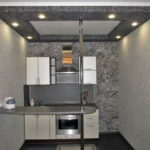
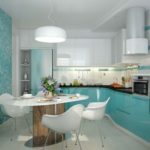


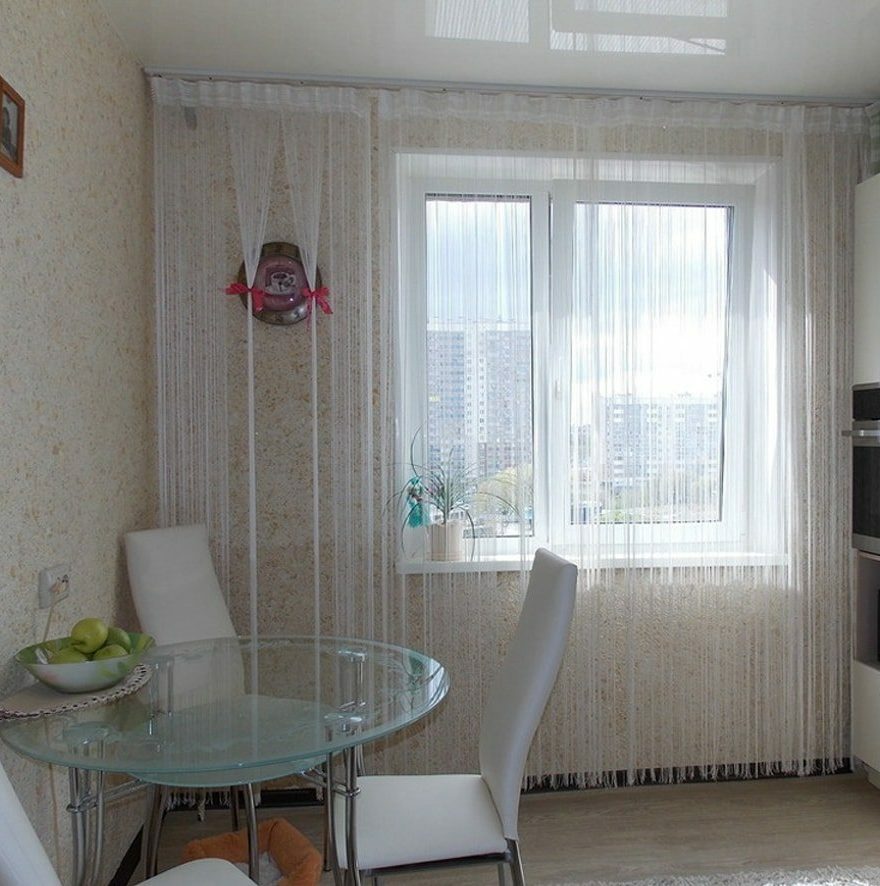
In the living room
The hall is devoid of the drawbacks of the kitchen area, so for it liquid wallpaper can become one of the best types of decoration. The material will create a unique interior. Due to the wide variety of types, you can easily choose any style, make the appropriate color scheme. The main thing is to correctly design the design, not to overdo it with details and shades. To do this, you should use the advice of professional designers:
- In a small living room, it is better to use light colors so as not to visually reduce it.
- In spacious rooms, saturated colors are suitable, large patterns and drawings, various decorations will look appropriate.
- In rooms with high ceilings, it is better to use horizontal stripes on the walls, with low ones - vertical stripes.
- When choosing a color palette, it is recommended to use the "color wheel". Shades located in the neighborhood will add harmony to the room. To create contrast, colors must be on opposite sides of the spectrum.
- Lighting is an important aspect. The same wallpaper at different light levels will look completely different.
- Using a combination of different types of liquid wallpaper, you can zoning the hall.
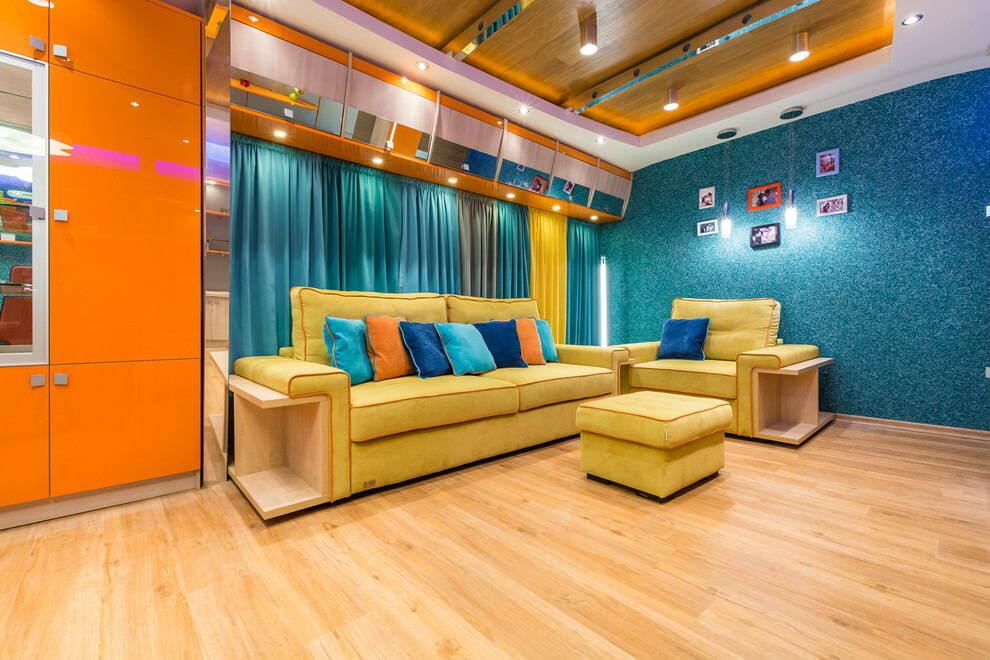


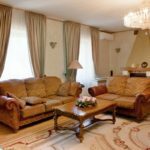
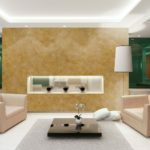
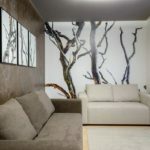
In the nursery
The substances used to prepare the composition are environmentally friendly. Therefore, liquid wallpaper will become simply indispensable for decorating a child's room. Also, the finishing material is characterized by good noise insulation, provides air permeability, which contributes to the creation in the room of the most comfortable conditions for the pastime of the child, keeping him active games.
The wallpapers are distinguished by a variety of color solutions, with the help of this mixture, any pattern can be applied to the walls without any problems. If you lack artistic skills, you can use ready-made stencils. The child himself, who will receive there are a lot of pleasant impressions from the process, from childhood he will get used to work, gain invaluable experience.
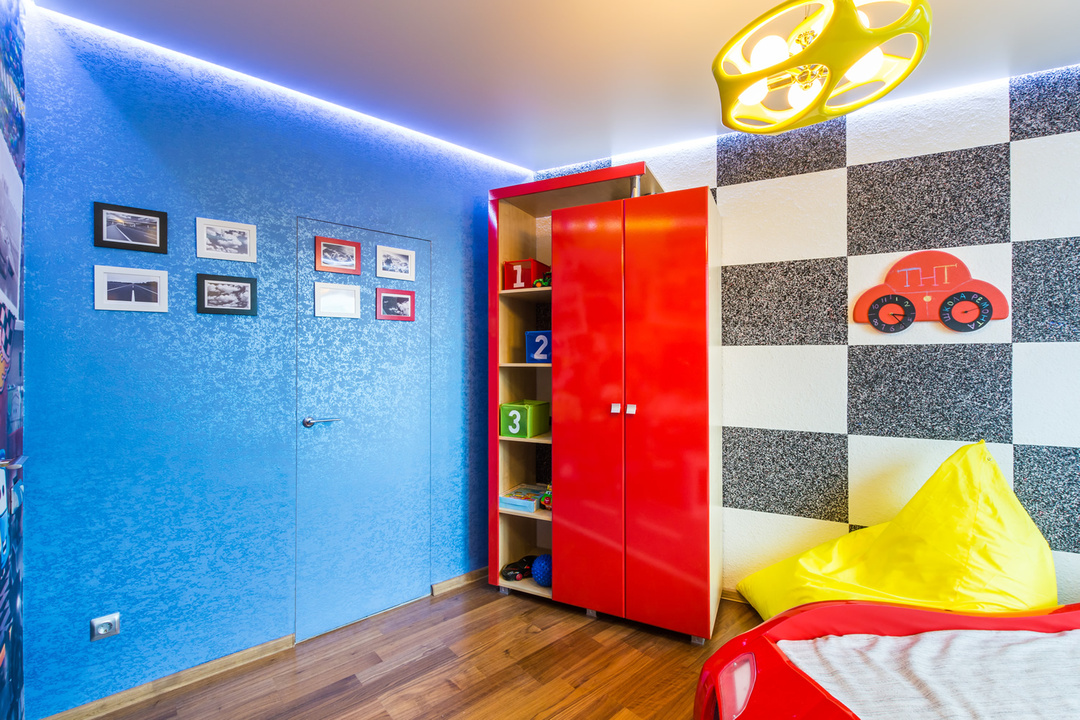
It should also be borne in mind that children grow up rather quickly, their interests change, and over time, the old finish will need to be replaced. After all, while the baby is small, the parents independently choose the design, but in adolescence, the children themselves begin to look for their own style, so the final decision should be agreed upon jointly. And the fact that the cladding is easy enough to remove by wetting a certain area is its big plus.
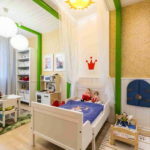
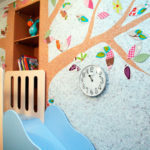
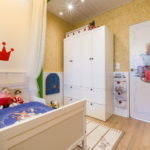
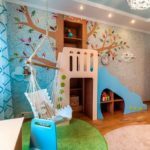

In the bedroom
A bedroom is a special room in every home, where the atmosphere of comfort and coziness is valued above all else. Liquid wallpaper, pleasant and warm to the touch, with a surface similar to textiles, will help to achieve the desired result. Using various design techniques, you can create all kinds of drawings and patterns, geometric shapes on the walls. By adding fluorescent paint to the composition, the facing material will emit a flickering glow in the dark.
Particular attention should be paid to the color palette. And although each person has their own preferences, you should not use aggressive colors, overdo it with dark shades. For example, a purple tone can increase anxiety, cause depression, a red tone can be over-agitated, and lead to a lack of sleep. Experts recommend applying large drawings to an accent wall.
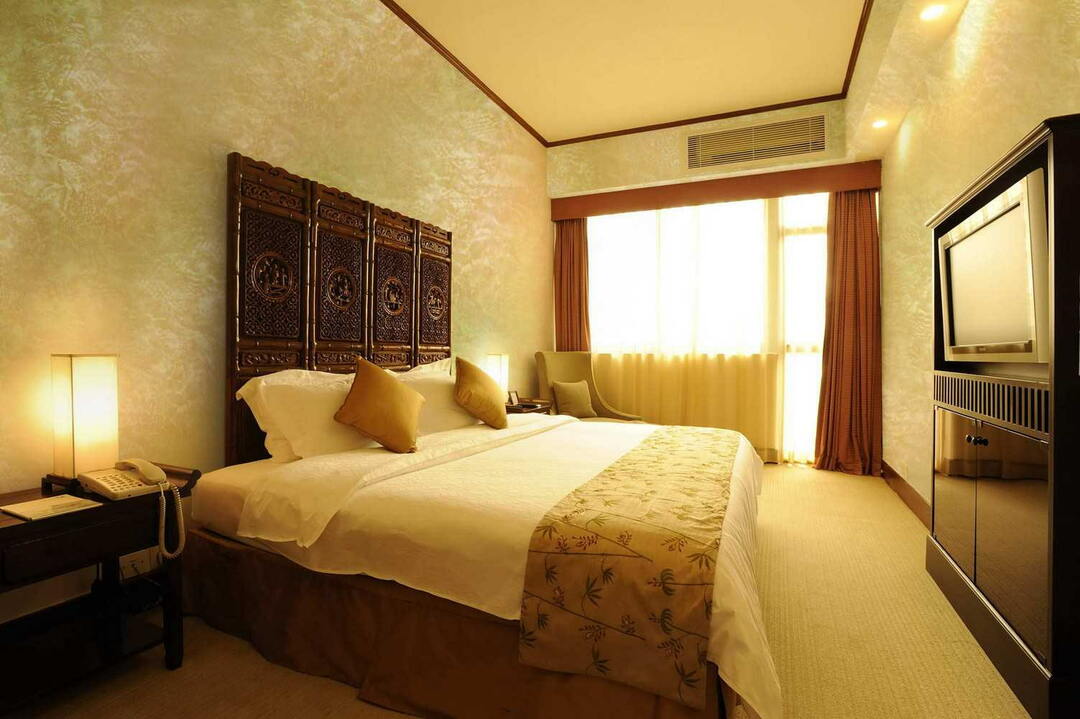
When decorating a room, it is better to use light shades of pastel colors, which will give the space a fresh look and create the necessary coziness. The use of contrasting colors should be left for the living room. The absence of sharp lines, correctly selected design will help to achieve the required level of comfort, completely relax, enjoy a good rest.
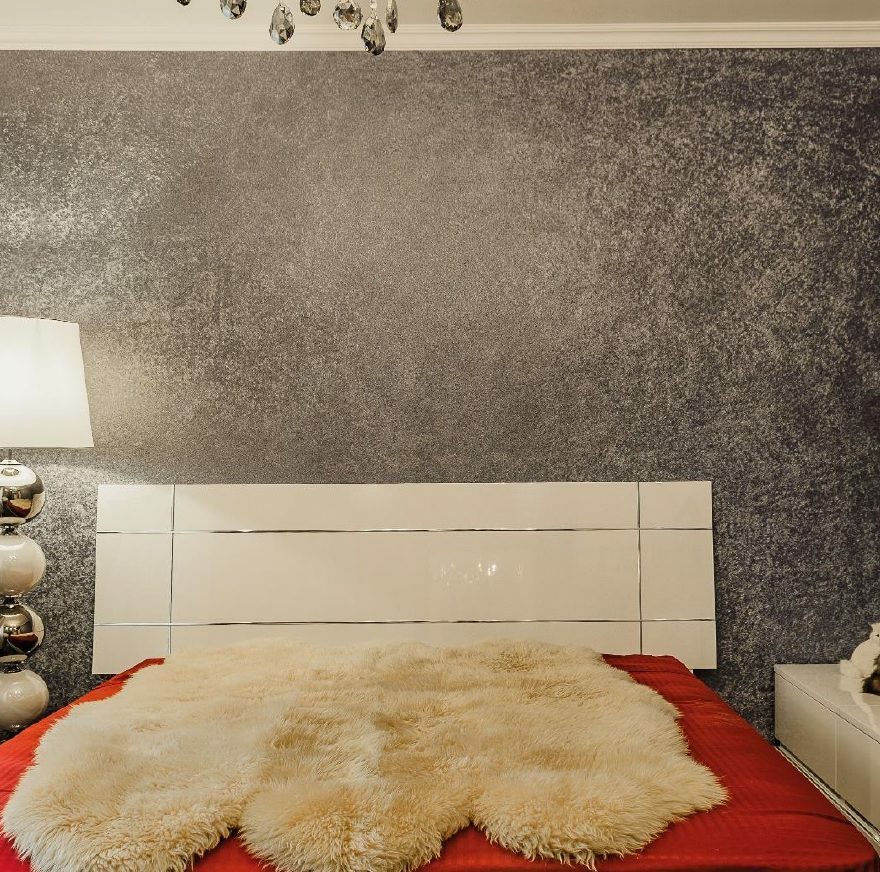
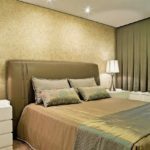
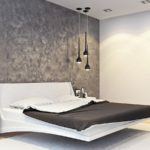
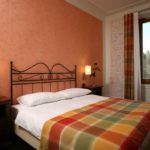
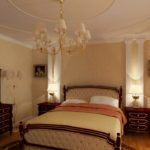
In the bathroom and toilet
With the help of liquid formulations, you can beautifully decorate a bathroom. They will decorate the room, but they will not last long. After all, the bathroom is the wettest room in the house, where the temperature drops constantly. In general, it is not recommended to glue any kind of wallpaper in this room, including products with liquid application technology. They will simply disappear from oversaturation with moisture, which will entail unnecessary financial costs.
Of course, you can experiment, after applying and drying the composition, additionally cover the surface with a colorless protective layer of acrylic-based varnish. It will protect the material from getting wet and give the surface a matte finish. But even with the slightest damage to the protective layer, the wallpaper will quickly absorb moisture and will soon become unusable.
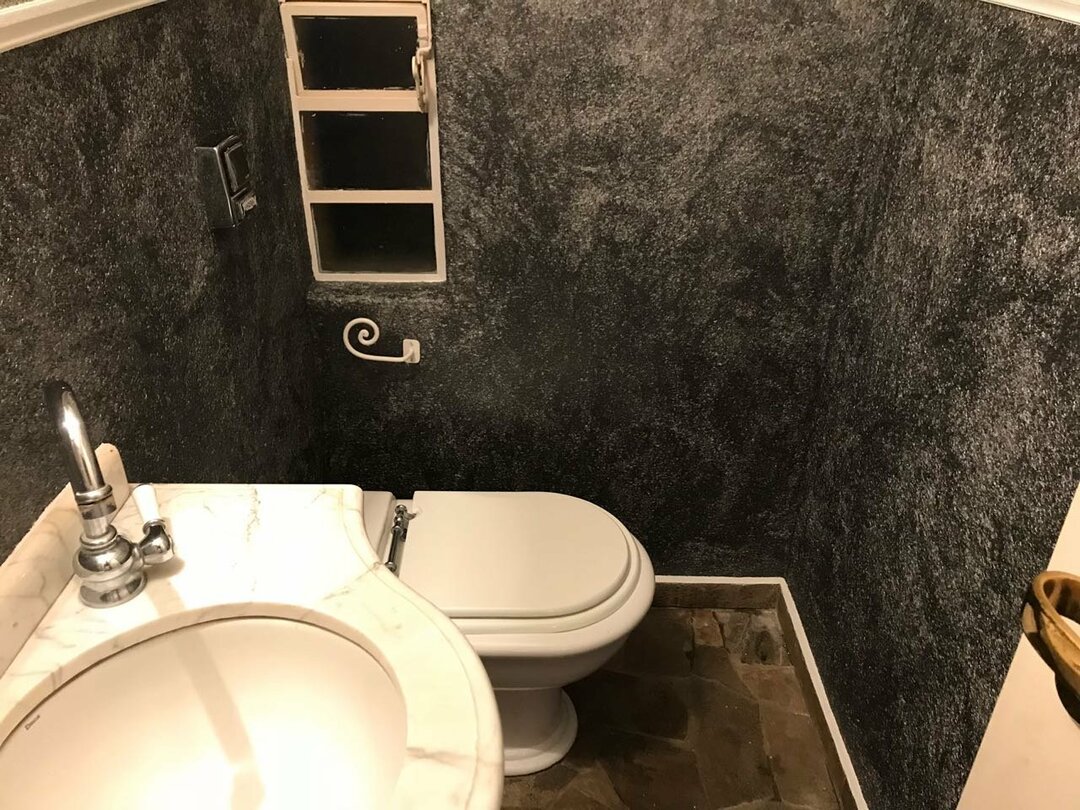
When choosing a liquid composition for decorating a toilet, it is also worth considering the factor of humidity. Here, on the walls, there are very often various objects made of metal, on which rust may appear in the future, so they need to be prepared and painted. Here, like the bathroom, it is better to additionally cover the walls with clear acrylic paint, which will increase the service life of the finishing material.
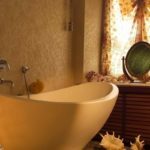
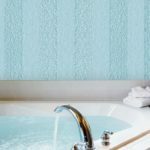
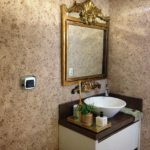
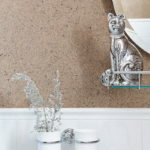
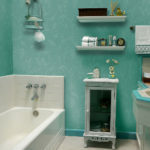
How to make liquid wallpaper with your own hands
The design of a wide variety of rooms in a house or apartment using liquid formulations is very popular among consumers. Ready-made compositions can be purchased at a hardware store, at specialized sites. However, the big disadvantage of such a purchase is its high cost. Lovers who want to do everything with their own hands can significantly save on finishing material by making the mixture on their own.
There are several ways to make a mixture. To do this, use only clean white paper, sawdust, combine materials. To realize creative ideas, consider a simple, but fairly common technology.
Required materials and tools:
- clean white paper or sawdust - 1 kg;
- clean water - 5 liters;
- PVA glue - 0.5 kg;
- gypsum or alabaster - 0.5 kg;
- antiseptic (according to the instructions);
- coloring pigment;
- fiber (cotton wool, cotton, linen, silk);
- decorative additives;
- bucket or basin;
- perforator with mixer attachment;
- brush, gloves.
The presented master class will help anyone who wants to make liquid wallpaper from paper or sawdust:
- We shred the paper. It can be torn by hand, cut with scissors, passed through a shredder.
- We collect warm water in a bowl or bucket, pour the crushed paper pulp into it, mix, leave the mixture for a couple of hours to swell.
- After the specified time, mix the resulting composition into a homogeneous mass.
- Add glue, chopped fiber, selected additives, pigment. Mix everything with a drill.
- Add gypsum to the resulting mixture, mix everything again, after which you can proceed to pasting the walls.
The resulting mass must be applied to the wall immediately after its manufacture, since the components harden very quickly.

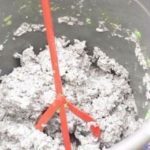
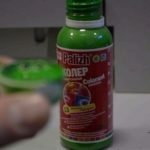
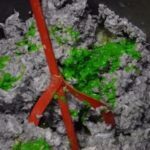
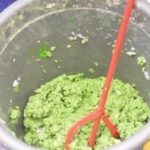
Conclusion
Liquid wallpaper will help to decorate the interior of rooms not only in a residential building or apartment, but are also perfect for decorating the premises of public institutions. Compared to conventional types, they do not leave any seams, they help to level the surface. They contain natural ingredients, so they do not cause any allergic reactions, are environmentally friendly, and can even be used in children's bedrooms and bedrooms. It is quite easy to work with the material, everyone can stick them. And those who want to save money on buying a finished product will be able to make the mixture on their own at home.

